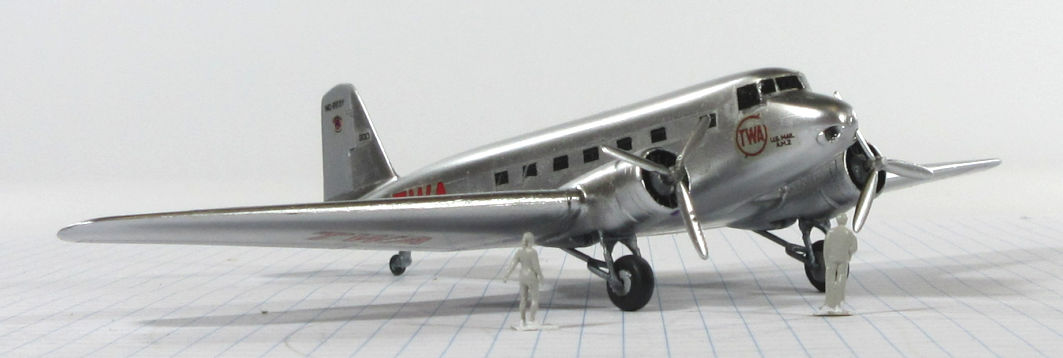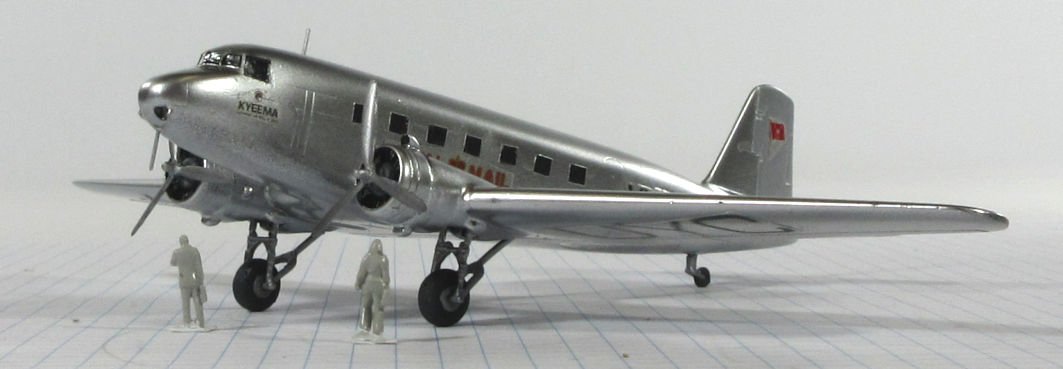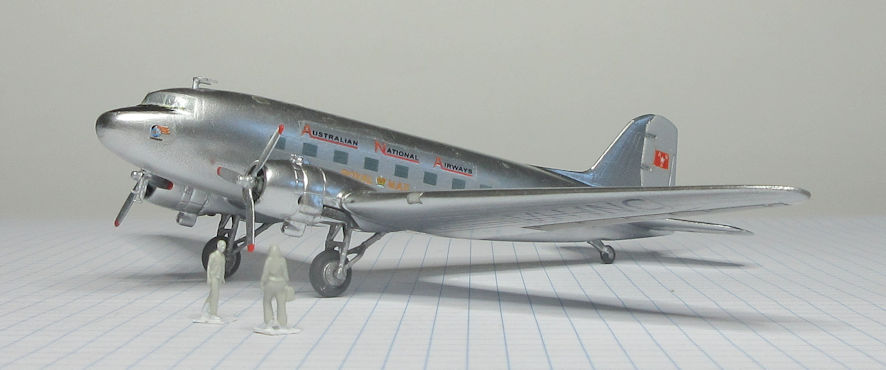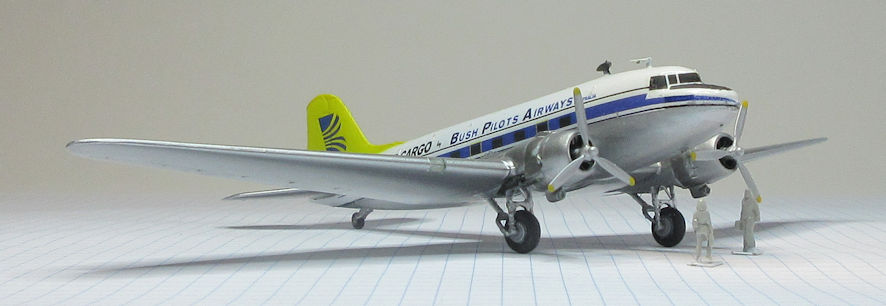The First Douglas Commercials
Douglas DC-1 – Douglas DC-2 – Douglas DC-3

One of the longest and most important series of aircraft ever manufactured was the Douglas airliners, beginning with the DC-1 in the early 1930s and ending with the DC-10 in the 1970s. Thousands upon thousands of Douglas Commercials were built in that period and quite a few remain flying today. Let’s begin by looking at the first three.
Douglas DC-1 converted from the CMR 1/144 kit
When TWA was unable to buy any of the new Boeing 247 airliners it issued a request for an airliner with a similar or better performance. Douglas was not interested at first because it did not think there would be enough interest to pay for even the design costs. Nevertheless it submitted a design that promised to out perform all existing airliners and one Douglas Commercial (DC-1) was built. It exceeded expectation and TWA ordered twenty with slightly increased capacity and more powerful engines, which became the DC-2.
So far as I am aware there is no kit of the DC-1 available in any scale. However, since the DC-1 was a shorter version of the DC-2 it is not difficult to make one. The DC-1 had seating for 12 passengers and the DC-2 had seating for 14 so all you have to do is remove one row of windows and that’s about it. You will need to relocate the wing on the fuselage as well, which is a little more difficult. I wrote a Workbench Note about that which you might find useful if you want to make your own DC-1
Douglas DC-2 in 1/144 by CMR Resin and 1/72 by MPM
The DC-2 entered service with TWA in May 1934. With its soundproofing, cabin heating and other features it introduced the world to relatively comfortable air transport for the first time. One hundred and ninety-eight were built between 1934 and 1939 and many ended up in military service under designations such as C-39 and R2D-1. Four DC-2s were imported to Australia before the war for airline service with Australian National Airways and Airlines of Australia and they proved very popular. Ten more second hand DC-2s were bought for the RAAF for military service in 1940.
In 1/72 there were several DC-2 kits published before 2000 but the only one you should be looking for is the MPM kit that was first published in 2000 and has since appeared in several boxings, and one release as a Special Hobby kit. You can find a good build review of this kit on the Intermodeler website. I enjoyed making this model, the only really challenging aspect was scratch buikding the decals for the ‘Bungana’, which was the first DC-2 in Australia.
In 1/144 the only useful option is the CMR kit which goes together nice and easily. As with the 1/72 DC-2, the only challenge was in making the decals for an Australian aircraft. This one is the ‘Kyeema’ which crashed on Mount Dandenong in 1938, contributing to a major restructuring of Australia’s civil aviation administration.
Douglas DC-3 in 1/144 by Roden and 1/72 by Esci
The DC-3 is among the world’s most famous aircraft. It was an enlarged version of the DC-2 with a 21 passenger capacity. The first one flew in December 1935 and 607 were produced between 1936 and 1942. Over 16,000 were then manufacture in military versions, many as C47s also known as the ‘Dakota’. Many were converted to civil use after the war and several hundred are probably still airworthy today.
There are many kits of the DC-3/C-47 in 1/72 scale and you can get rather confused trying to work out which one might be the best. The Fine Scale Modeler review of the 2014 new tool Aifix kit says that it is ‘clearly the best … now’ but earlier the Esci kit was reckoned to be a bit better than the rest. I was impressed by the Airfix kit when I bought it but wanted to make a pre-war DC-3 and so traded it for the Esci kit which was more suitable for my purposes. To make the pre-war version I also needed the aftermarket engine set which might now be hard to find. I made this model as the ‘Kyilla’ which was the first DC-3 to fly on Australian airways in November 1937.
In 1/144 there are several option including a Welsh Models 1990s version and a 2018 Karaya kit that I’ve not seen but could be good, judging by the Karaya kits I have seen including their recent Lockheed 10. The Minicraft kit that dates from 1996 is okay and you can find it in more boxings that I can count, but I much prefer the 2013 Roden kit which captures the look of the DC-3 better than the other kits I’ve seen. I’ve made this model in two versions, the early post-war ANA DC-3 and the 1979 Bush Pilots Airways livery.






